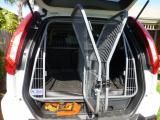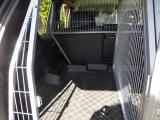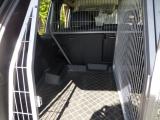

Lagotto58
-
Posts
14 -
Joined
-
Last visited
Posts posted by Lagotto58
-
-
I always thought this was a little dog Soft Pallet issue but now I have a larger dog that did this for the first time a couple of weeks back.
Here is a nice simple explanation of reverse sneezing I came across. I wish I'd had it before to explain to panicked owners certain their beloved dog was dying!
Becky Lundgren on Reverse Sneezing
Reverse Sneezing (Pharyngeal Gag Reflex)
Authored by: Becky Lundgren, DVM
Reverse sneezing is a disconcerting event in which a dog makes unpleasant respiratory sounds that sound like it is dying -- or will die in the next few minutes. Reverse sneezing sounds similar to the honking noise made by a dog with a collapsing trachea, but reverse sneezing is a far simpler condition that usually does not need any treatment. It is called reverse sneezing because it sounds a bit like a dog inhaling sneezes. The sound the dog makes can be so scary that many owners have rushed in a panic to emergency clinics in the middle of the night.
The most common cause of reverse sneezing is an irritation of the soft palate and throat that results in a spasm. During the spasm, the dog's neck will extend and the chest will expand as the dog tries harder to inhale. The problem is that the trachea has narrowed and it's hard to get the normal amount of air into the lungs.
Anything that irritates the throat can cause this spasm and subsequent sneeze. Causes include excitement, eating or drinking, exercise intolerance, pulling on a leash, mites, pollen, foreign bodies caught in the throat, perfumes, viruses, household chemicals, allergies, and post-nasal drip. If an irritant in the house is the cause, taking the dog outside can help simply because the dog will no longer be inhaling the irritant. Brachycephalic dogs (those with flat faces, such as Pugs and Boxers) with elongated soft palates occasionally suck the elongated palate into the throat while inhaling, causing reverse sneezing. Small dogs are particularly prone to it, possibly because they have smaller throats.
Reverse sneezing itself rarely requires treatment. If the sneezing stops, the spasm is over. Oftentimes, you can massage the dog's throat to stop the spasm; sometimes it's effective to cover the nostrils, which makes the dog swallow, which clears out whatever the irritation is and stops the sneezing. If the episode doesn't end quickly, you can try depressing the dog's tongue, which opens up the mouth and aids in moving air through the nasal passages. Treatment of the underlying cause, if known, is useful. If mites are in the laryngeal area, your veterinarian may use drugs such as ivermectin to get rid of the mites. If allergies are the root of the problem, your veterinarian may prescribe antihistamines. Because reverse sneezing is not a severe problem, do not worry about leaving your dog home alone; if it occurs when you're not there, the episode will most likely end on its own.
If reverse sneezing becomes a chronic problem rather than an occasional occurrence, your veterinarian may need to look up the nasal passages (rhinoscopy), and may even need to take a biopsy to determine the cause of the problem. Sometimes, however, no cause can be identified.
Some dogs have these episodes their entire lives; some dogs develop the condition only as they age. In most dogs, however, the spasm is a temporary problem that goes away on its own, leaving the dog with no after-effects.
Cats are less likely to reverse sneeze than dogs are. However, owners should always have the veterinarian examine the cat in case it's feline asthma, and not a reverse sneeze. Feline asthma requires more treatment than reverse sneezing does.
Date Published: 6/26/2006 10:54:00 AM
-
Here is a nice simple explanation of reverse sneezing I came across. I wish I'd had it before to explain to panicked owners certain their beloved dog was dying!
Becky Lundgren on Reverse Sneezing
Reverse Sneezing (Pharyngeal Gag Reflex)
Authored by: Becky Lundgren, DVM
Reverse sneezing is a disconcerting event in which a dog makes unpleasant respiratory sounds that sound like it is dying -- or will die in the next few minutes. Reverse sneezing sounds similar to the honking noise made by a dog with a collapsing trachea, but reverse sneezing is a far simpler condition that usually does not need any treatment. It is called reverse sneezing because it sounds a bit like a dog inhaling sneezes. The sound the dog makes can be so scary that many owners have rushed in a panic to emergency clinics in the middle of the night.
The most common cause of reverse sneezing is an irritation of the soft palate and throat that results in a spasm. During the spasm, the dog's neck will extend and the chest will expand as the dog tries harder to inhale. The problem is that the trachea has narrowed and it's hard to get the normal amount of air into the lungs.
Anything that irritates the throat can cause this spasm and subsequent sneeze. Causes include excitement, eating or drinking, exercise intolerance, pulling on a leash, mites, pollen, foreign bodies caught in the throat, perfumes, viruses, household chemicals, allergies, and post-nasal drip. If an irritant in the house is the cause, taking the dog outside can help simply because the dog will no longer be inhaling the irritant. Brachycephalic dogs (those with flat faces, such as Pugs and Boxers) with elongated soft palates occasionally suck the elongated palate into the throat while inhaling, causing reverse sneezing. Small dogs are particularly prone to it, possibly because they have smaller throats.
Reverse sneezing itself rarely requires treatment. If the sneezing stops, the spasm is over. Oftentimes, you can massage the dog's throat to stop the spasm; sometimes it's effective to cover the nostrils, which makes the dog swallow, which clears out whatever the irritation is and stops the sneezing. If the episode doesn't end quickly, you can try depressing the dog's tongue, which opens up the mouth and aids in moving air through the nasal passages. Treatment of the underlying cause, if known, is useful. If mites are in the laryngeal area, your veterinarian may use drugs such as ivermectin to get rid of the mites. If allergies are the root of the problem, your veterinarian may prescribe antihistamines. Because reverse sneezing is not a severe problem, do not worry about leaving your dog home alone; if it occurs when you're not there, the episode will most likely end on its own.
If reverse sneezing becomes a chronic problem rather than an occasional occurrence, your veterinarian may need to look up the nasal passages (rhinoscopy), and may even need to take a biopsy to determine the cause of the problem. Sometimes, however, no cause can be identified.
Some dogs have these episodes their entire lives; some dogs develop the condition only as they age. In most dogs, however, the spasm is a temporary problem that goes away on its own, leaving the dog with no after-effects.
Cats are less likely to reverse sneeze than dogs are. However, owners should always have the veterinarian examine the cat in case it's feline asthma, and not a reverse sneeze. Feline asthma requires more treatment than reverse sneezing does.
Date Published: 6/26/2006 10:54:00 AM
-
I am looking to upgrade my vehicle to a new Xtrail and I was hoping to get some ideas of combinations that are available for this vehicle. I understand Puppybars have been installed in a lot of Xtrail vehicles so I was wanting some ideas, two/one door, underfloor storage/platforms etc, what are the sizes of the areas for two dogs etc, I have medium sized dogs but prefer to have them in the vehicle in separate areas.
-
-
-
-
-
I have had the puppy bars fitted with two doors in the Xtrail 2013 STL Model, really great setup, very happy. Will post a couple of photos when I work out how. Doors/opening is 400 mm wide x 800 mm high, plenty of room for each dog.
-
I got mine made by Zandona Trailers.....still in Victoria but I like them better than the PB ones I see. Mine are 100% made for my specific car, they were also heaps cheaper and only took a month from start to finish.
Mine are also black as they are made in the guys workshop from scratch they can be powdercoated in any colour.
If you have a new Xtrail, a 2 door isn't really suitable due to back ends "pear" shape. I wanted a two door originally with the option for a divider if I need one, but after measuring them up the guys showed me how much room I would have and it wasn't much....and my dogs are pretty slim!
I stuck with a single door and couldn't be happier :)
Definately recommend Zandona, if I remember I will take a photo and post it :)
Do you have a false floor also?
Yes one in the car and I might add a further one, adapted from my old xtrail for a bit more storage space under the caged area. I would be interested to see your photos.
-
I got mine made by Zandona Trailers.....still in Victoria but I like them better than the PB ones I see. Mine are 100% made for my specific car, they were also heaps cheaper and only took a month from start to finish.
Mine are also black as they are made in the guys workshop from scratch they can be powdercoated in any colour.
If you have a new Xtrail, a 2 door isn't really suitable due to back ends "pear" shape. I wanted a two door originally with the option for a divider if I need one, but after measuring them up the guys showed me how much room I would have and it wasn't much....and my dogs are pretty slim!
I stuck with a single door and couldn't be happier :)
Definately recommend Zandona, if I remember I will take a photo and post it :)
Do you have a false floor also?
-
jackC not sure where you are, 3mth waiting list and he is heading OS mid June so wants orders before then. I want two doors and a divider for medium sized dogs, not a problem door width should be around 45cm which should be fine. I actually thought the new xtrail looked bigger than my 8 year old one but the width is pretty much the same, maybe the length is a little longer. Great price I thought.
-
How did you go with the puppy bars, I am about to purchase a new Xtrail and would appreciate photos of Puppy Bar combinations can you email me a photo of what you have got for your vehicle. Necia
-
I am looking to upgrade my vehicle to a new Xtrail and I was hoping to get some ideas of combinations that are available for this vehicle. I understand Puppybars have been installed in a lot of Xtrail vehicles so I was wanting some ideas, two/one door, underfloor storage/platforms etc, what are the sizes of the areas for two dogs etc, I have medium sized dogs but prefer to have them in the vehicle in separate areas.




Titre Testing Australia
in General Dog Discussion
Posted
I know this topic has been discussed before but I am amazed after visiting my vet today to be told that there is nowhere in Australia doing Titre testing and that the tests would need to go to the US. Is this right, I have been using this vet for a number of years so believe what they say but on the other hand having heard a number of owners talking and opting for this test rather than a vaccination that I am now wondering.